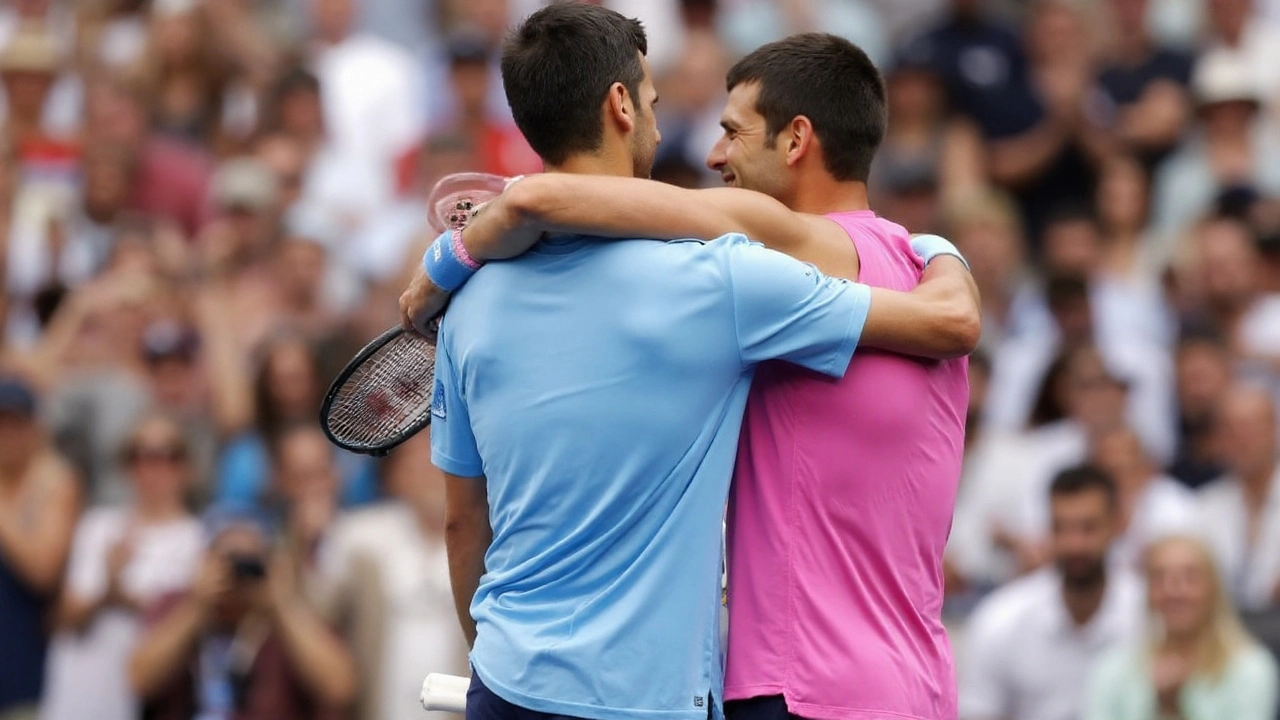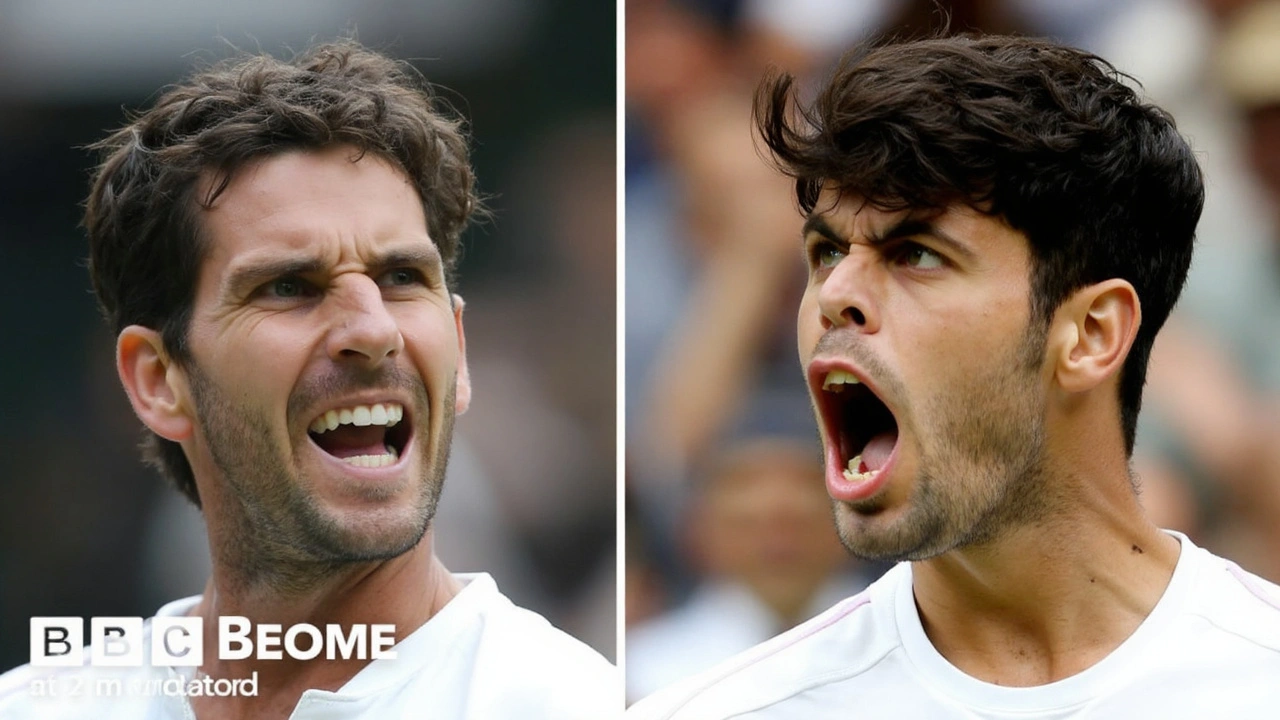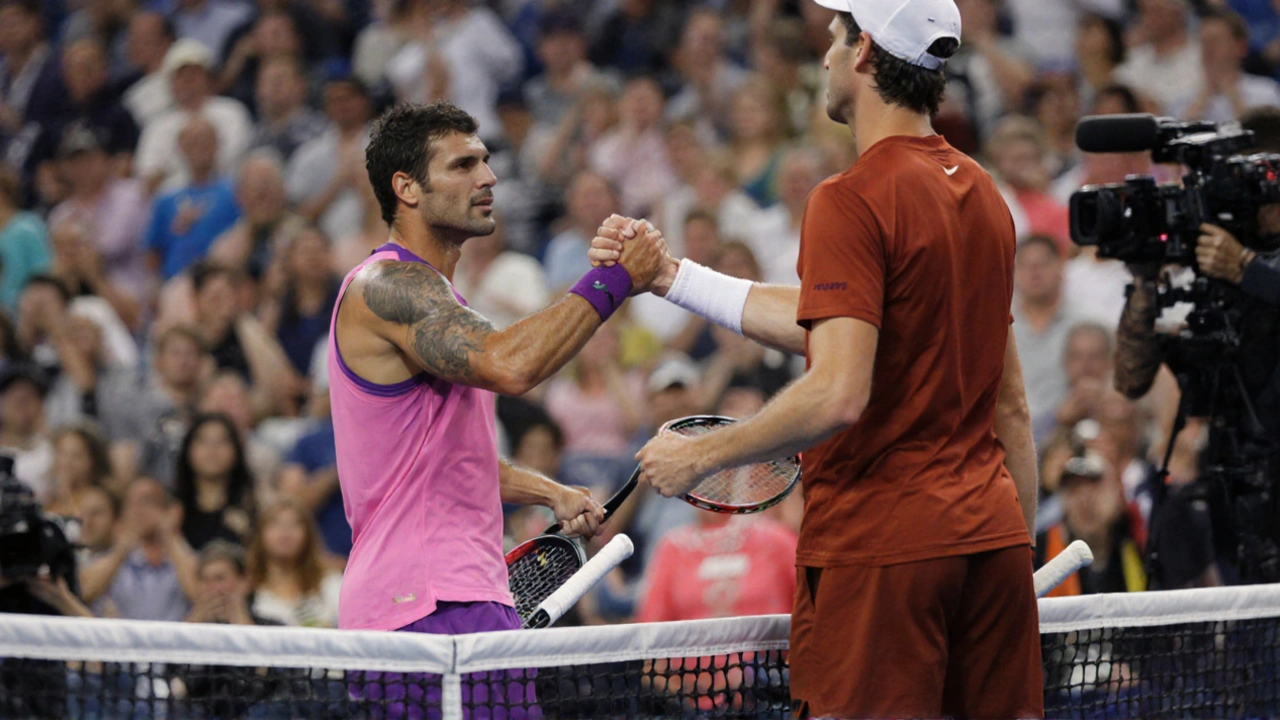US Open 2025: Carlos Alcaraz 'too good' as Djokovic falls in straight sets

Alcaraz slams the door on Djokovic with a straight-sets statement
On Arthur Ashe Stadium, where comebacks are born and nerves get chewed up for hours, the match barely left room for doubt. Novak Djokovic took the court hunting a record-extending 25th major and his first Grand Slam final of the season. Carlos Alcaraz shut that door with authority: 6-4, 7-6, 6-2 in two hours and 25 minutes, a win so complete that Djokovic could only admit the obvious—on this night, the Spaniard was "too good."
The opener set the tone. Alcaraz broke in the very first game and never really let Djokovic breathe. Even when the 38-year-old flashed those trademark backhand lasers, he was hitting from uncomfortable spots, often leaning or reaching after being pushed off the baseline. Alcaraz’s forehand had real heft—he was striking it at more than 80 mph—and that weight of shot swung rallies in his direction again and again.
Djokovic’s first-serve numbers told part of the story. In the opening set he won just 65% of points behind it, a dip that gave Alcaraz frequent looks at second serves and mid-court balls. Under that pressure, Djokovic’s usual precision started to fray. The clean patterns he used to beat Alcaraz earlier this year in Melbourne didn’t land the same. The court belonged to the younger man.
The second set was the window Djokovic needed. He steadied, stretched rallies, and tried to force errors with depth and angle. It still wasn’t enough. Alcaraz met him ball for ball, then found extra gear when it mattered. The breaker swung on small margins—one bold forehand, one nerveless return—and Djokovic found himself two sets down, with the crowd buzzing about the shift they were watching.
By the third, scoreboard pressure did the rest. Djokovic aimed bigger, chased lines, and looked for quick points. Alcaraz, unfazed, kept him pinned to the back fence and picked off service games with clean returning and early strikes. The 22-year-old’s movement was like a vise—tightening with each rally. One more break, then another, and Djokovic’s fourth US Open title run was done before it ever felt close.
That last part matters. Alcaraz didn’t just beat Djokovic; he kept the match on his terms from the first ball. He used pace to open space, then hit into it. He varied height and spin to keep the ball above Djokovic’s strike zone. And he made sure nothing came easy on serve, standing firm on the big points. Small edges add up fast at this level. Alcaraz owned most of them.
All tournament long, the world has seen the same movie: the Spaniard hasn’t dropped a set in New York this year. He’s mixing the ferocity that won him majors with a calmer shot selection—less showpiece risk, more repeatable damage. You can feel it in his body language. No rush. No panic. Just control.
What this result says about the season—and the era
Let’s start with the winner. Carlos Alcaraz is charging through 2025. He now leads the Tour with 60 wins and six titles and is on pace to better his 2023 marks of 65 wins and six trophies. His ticket to the Nitto ATP Finals in Turin is already punched for November 9–16. He’s not just stacking results; he’s stacking dominance.
There’s also history baked into this. Alcaraz has reached seven Grand Slam finals before turning 23, a club so exclusive it only holds Bjorn Borg, Rafael Nadal, Mats Wilander, and Jim Courier. And he’s done it this fortnight without dropping a set. That’s not momentum; that’s authority.
Now, the bigger picture. The last seven majors have been won by Alcaraz and Jannik Sinner, a stat that hits like a headline all by itself. It signals a new center of gravity in men’s tennis. Djokovic has stretched eras before and resisted more than one wave, but the current tide isn’t letting up. It’s younger, faster, and punishes any service dip or short ball.
To be fair, Djokovic is still making the weekend at the sport’s toughest events. He’s 37–16 in Grand Slam semifinals and he reached the last four at all four majors this year—matching Jannik Sinner as the only man to do it in 2025. That’s elite territory. But this was a night where his edges didn’t stick. The return wasn’t biting as often. The forehand, under pressure, leaked. And the first serve didn’t give him enough cheap points to reset the tone.
The Serb came in with a game plan that worked in Australia: rush Alcaraz on the backhand wing, hold middle court, finish forward when the short ball comes. The problem? The short balls didn’t come often enough. Alcaraz’s depth made neutral rallies feel defensive for Djokovic, and from there, the scoreboard tilted toward the kid.
Djokovic will leave New York without the 25th Slam he was chasing. He’s a four-time US Open champion and still a threat every time he walks into a major. The consistency is there; the problem is the ceiling on the other side of the net. When Alcaraz hits that cruising speed—heavy forehand, quick first step, bold on the big points—he turns close matches into straight sets. That’s what we saw here.
For Alcaraz, this win is more than revenge for the Australian Open quarterfinal loss earlier this year. It’s proof of adaptation. He handled the long rallies without overplaying. He trusted the serve patterns that set up his forehand. And he didn’t blink in the tiebreak that defined the match’s emotional center. Those are championship habits—and they travel from surface to surface.
There’s still work ahead. The final awaits, and the margin for error shrinks even further on the last Sunday in New York. But the posture is clear: Alcaraz enters as the form player of 2025, with the legs, the firepower, and the numbers to back it up.
As for Djokovic, the semis across all four majors this season say his base level remains top-tier. If there’s a fix, it starts with the serve. A few more first serves in, a few more plus-one forehands, and the rallies play on his terms. He’s built entire careers on those small corrections before. No one will write him off after a season like this.
One last note on the night itself. Arthur Ashe felt the shift. It wasn’t hostile to Djokovic; it was honest about the tennis. The crowd rode the rallies, held its breath in the second-set breaker, then exhaled as the third set sped away. That’s the energy of a sport that’s living a hard handover in real time.
Alcaraz leaves with the kind of win that changes how a tournament feels. He hasn’t lost a set. He took down the greatest hard-court competitor of the last decade. And he did it by dictating from ball one. Whoever stands across from him in the final will have to find answers that Djokovic couldn’t. Right now, there aren’t many on offer.



Tom Gin
September 7, 2025 AT 11:35Danica Tamura
September 7, 2025 AT 11:53William H
September 8, 2025 AT 02:24Katelyn Tamilio
September 8, 2025 AT 22:19Michael Klamm
September 9, 2025 AT 13:37Shirley Kaufman
September 10, 2025 AT 03:05